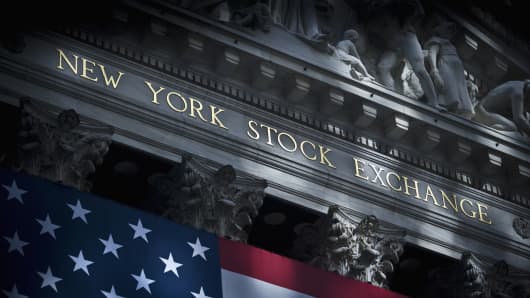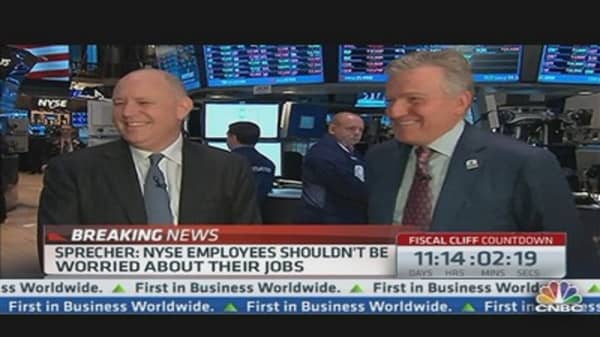The Intercontinental Exchange announced on Thursday plans to buy the NYSE Euronext in a transaction valued at approximately $8.2 billion, bringing to an end the Big Board's storied era of more than two centuries as an independent institution.
The ICE said it intends to offer $33.12 per share, representing a premium of about 37 percent over NYSE Euronext's Wednesday closing price. CNBC first reported on merger talks between the two companies after the closing bell on Wednesday.
In early trading, the NYSE's stock soared by 31 percent in heavy volume that was more than 12 times its normal average.
The 220 year old NYSE, which bought the Euronext about six years ago, is the world's largest stock exchange. Its listed companies with a combined market capitalization of more than $14 trillion -- approximately the size of the U.S. economy itself.
Technology, however, has altered the terrain for traditional stock market operators. The largest companies have been forced to buy out smaller competitors, as part of efforts to keep pace with rapid electronic trading, and build a footprint in various asset classes that are more profitable than stocks.
The deal will be comprised of about 1/3 cash, and 2/3 stock consideration. But in an unexpected move, the ICE's deal with the NYSE could result in the European arm of the exchange being spun off in an initial public offering -- effectively undoing the Big Board purchase of it in 2006.
In a conference call with investors and reporters, Jeffrey C. Sprecher, the ICE's founder, chairman and CEO, said there were "massive amounts of synergies that we can realize in two years. As markets change we can accelerate quickly," he said, adding that he was "very impressed" with the NYSE-Euronext's business.




